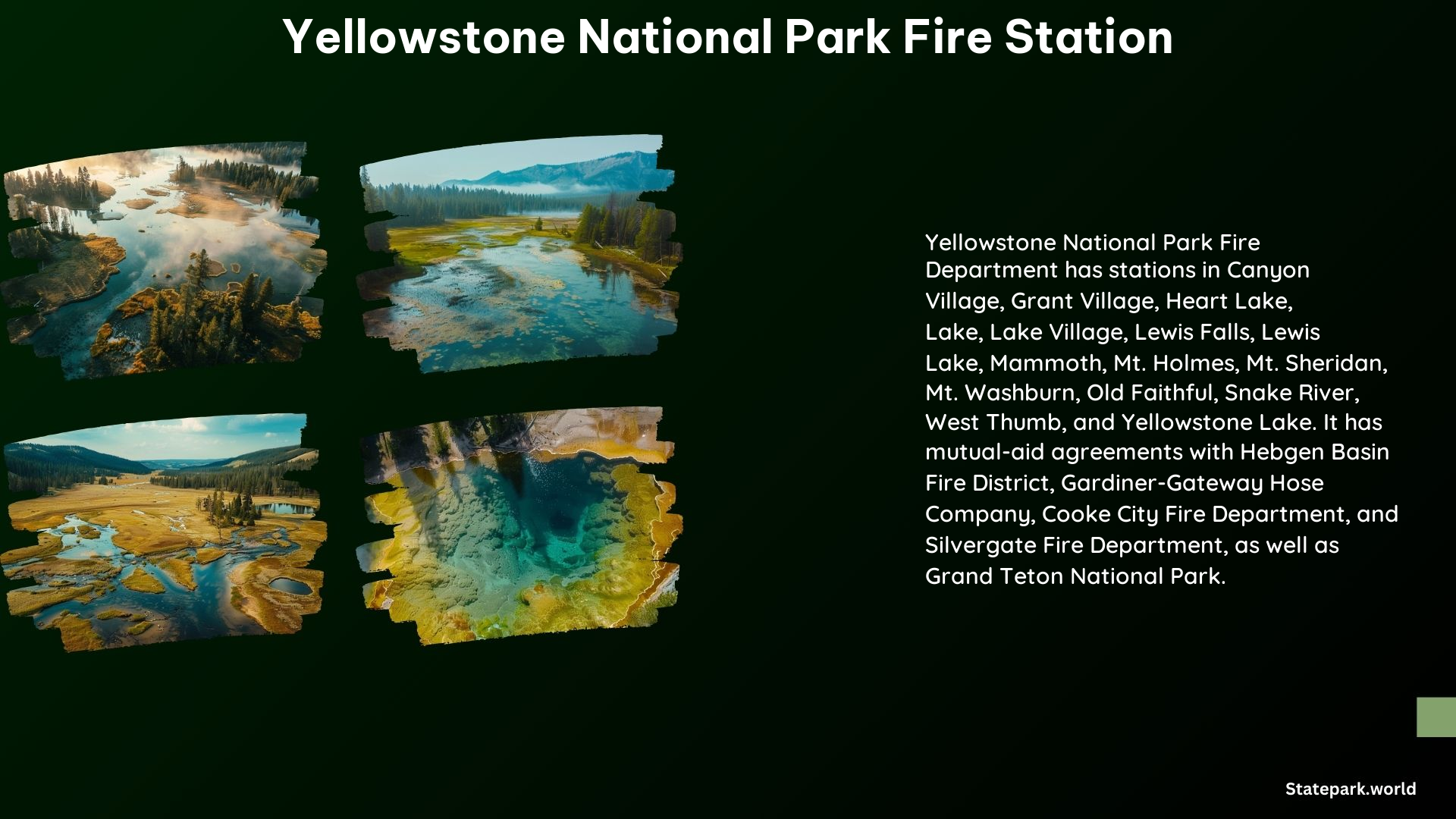The Yellowstone National Park Fire Station plays a vital role in detecting, monitoring, and suppressing wildfires within the park’s vast and diverse ecosystem. As a key player in the park’s fire management strategy, the fire station employs a range of tactics and resources to ensure the safety of visitors, staff, and the natural environment.
Fire Detection and Monitoring
The fire station maintains two fire lookout stations on Mt. Washburn and Mt. Sheridan, which are staffed with trained firefighters equipped with cell phones, radios, and high-quality optical equipment. These lookouts serve as the primary means of fire detection and monitoring within the park, allowing the fire station to respond quickly to any emerging threats.
Initial Attack and Helitack Crew

The fire station has a wildland fire engine that supports the initial attack of fires locally and can be used for large firefighting efforts throughout the country. Additionally, the Yellowstone Helitack Crew, an eight-person crew, responds to wildfires and search and rescue operations, managing and staffing a Type 3 Helicopter based at Mammoth Hot Springs.
Fuels Management
The fire station is actively involved in fuels management, which includes planned prescribed burns and mechanical treatments to reduce hazardous fuel loads near developed areas. This proactive approach helps to mitigate the risk of wildfires spreading quickly and threatening park infrastructure and visitor safety.
Fire Prevention and Suppression
The fire station conducts fire inspections for commercial properties and pre-construction site reviews to ensure proper fuel mitigation requirements are met. They also develop pre-plans for both commercial buildings and private residences to identify potential hazards and develop strategies for emergency response.
When it comes to fire suppression, the fire station is equipped with a variety of apparatus, including engines, helicopters, and pumps. They have a cache of pumps and water handling equipment, which can be used to build wetlines and support structure protection.
Mutual Aid Agreements
The fire station has mutual-aid agreements with neighboring fire departments, including Hebgen Basin Fire District, Gardiner-Gateway Hose Company, Cooke City Fire Department, and Silvergate Fire Department, as well as Grand Teton National Park. This ensures that resources can be shared and coordinated during large-scale incidents.
Operations and Training
The fire station is staffed 24 hours a day year-round with shifts of six firefighters and a paramedic. They have an extensive training program to ensure that crews are prepared to handle a wide variety of emergencies, including emergency medical services, rescue, hazardous material mitigation, structural and wildland firefighting, and fire prevention.
Statistics and Incidents
Yellowstone National Park averages around 25 fires per year, with approximately 80% caused by lightning. The fire station’s efforts are not limited to the park, as they also assist other forests and parks across the United States with wildfire and search and rescue operations when fire activity in Yellowstone is low.
References
- Wildland Fire Program – Yellowstone National Park (U.S. National Park Service)
- Yellowstone Mountain Club Fire Department
- Responding to Fires – Structural Fire Program (U.S. National Park Service)
- Yellowstone National Park Fire Department – 5280Fire
- Yellowstone National Park Fire Department – Firefighting Wiki
